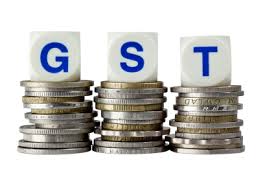The Goods and Service Tax (GST) is a comprehensive tax which will subsume excise, service tax, state vat, entry octroi etc., and will replace all other indirect levies on goods and services by the indian central and state government. The idea of GST was first brought up by the Vajpayee government in the year 2000. One of the biggest tax reforms in India, it will break the tax barriers between the states and unite India by a uniform tax rate by building a transparent and corruption free tax administration.
Under GST, with the cascading taxes gone, over a period of time the lower tax burden would translate into lower prices for goods. Since the burden will be divided equitably between manufacturing and services, the whole process will be at ease for manufacturers. It is estimated that GST will raise Dollar 15 billion each year and elevate employment and exports. On a negative note, the enforcement of GST will hit the state’s tax collection due to subsuming of state levies but as a remedy, centre is coming up with a provision on compensation for a period of 3 years on losses arising out of GST to state.
Although the implementation of GST had missed several deadlines, a ray of hope is being witnessed with the rolling out of this tax and clearing the first hurdle, being passed by Lok sabha on 6th May 2015. But for this acceleration to turn into execution, the bill needs to be cleared by the Rajya Sabha and has to be endorsed by the state legislatures. Subsequently, centre and states will decide on the tax rates and a GST bill has to be approved by parliament.
The Modi government has set April 1, 2016 as the latest deadline for the implementation of GST. Although this new concept of including all goods and services under the GST is a welcome one, with BJP and its allies in minority in the Rajya Sabha and congress’s determination to send it to a parliamentary standing committee, the bill is expected to face quite a few blockades.
Click here for government certification in Accounting, Banking & Finance





12 Comments. Leave new
Informative article
Informative
So informative ! Looking forward to this amendment.
Very well explained!
The implementation is still 11 months away. I am expecting a lot of drama regarding this in these 11 months.
Good work!
Well explained
Good article in respect of current affairs and well explained.
nice piece of work, with lots of information about gst.
Thank you so much everyone for your compliments.
informative one
good work!